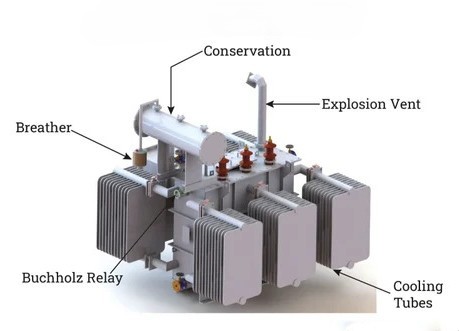The electrification of industries, rise in IoT-enabled devices, and demand for high-performance electronics have led to compact, powerful, and densely populated electronic assemblies. However, this advancement comes with a major challenge: heat generation. Without proper thermal management, electrical components can overheat, leading to system errors, shortened component lifespan, and catastrophic failures.
While liquid cooling is used in extremely high-power applications, air cooling remains the dominant method due to its simplicity, reliability, and cost-efficiency. Air cooled electrical components are designed to dissipate heat into the surrounding atmosphere using natural or forced convection, eliminating the need for fluids, pumps, or plumbing.
From small circuit boards to industrial power modules, air cooled designs are essential in HVAC systems, power conversion units, EVs, data centers, and automation panels.
What Are Air Cooled Electrical Components?
Air cooled electrical components are electronic and electromechanical parts that rely on air (natural convection or fan-assisted) to transfer heat away from heat-generating elements.
These components feature:
- Thermally optimized surfaces such as fins or heat sinks
- Ventilation designs to allow airflow
- Strategic layout within enclosures to support heat escape
- Materials with high thermal conductivity (e.g., aluminum, copper)
They’re not just passively cooled—they’re engineered for airflow efficiency, often with built-in fans, airflow ducts, and temperature sensors to maintain optimal operating temperatures.
Common Air Cooled Electrical Components
Power Semiconductors
- Examples: IGBTs, MOSFETs, SCRs, diodes
- Where used: Motor drives, inverters, UPS systems, EV controllers
- Cooling design: Mounted on aluminum heat sinks; often integrated with fans or blowers
- Unique detail: Some modern modules embed phase-change materials between the semiconductor and heat sink for burst-load absorption.
Dry-Type Transformers
- Use: Power distribution in buildings, factories, hospitals
- Cooling method: Ambient air or fans passing through windings and core laminations
- Advantages: No oil means safer, non-flammable operation
- Unique feature: Cast resin versions are sealed against dust and moisture, perfect for indoor installations.
Electrical Control Panels
- Components inside: Relays, contactors, PLCs, SMPS, VFDs
- Cooling: Louvers for passive airflow or exhaust fans for active cooling
- Design innovation: Use of thermal zoning inside enclosures—hot components placed near vents or fan streams.
Air Cooled Inverters & Converters
- Used in: Solar power systems, EVs, elevators
- Cooling: Fan-assisted airflow across finned surfaces; directional baffles guide cool air over high-load circuits
- Unique insight: High-performance inverters now use sensor-driven fan speed control to balance performance and energy savings.
Capacitor Banks
- Purpose: Power factor correction in substations
- Air cooling: Essential due to large surface area and voltage levels; heat rises from dielectric losses
- Design note: Rack designs allow natural airflow without the need for moving parts.
Air Cooled Generators
- Used in: Hospitals, mobile units, off-grid backup
- Cooling: Enclosed airflow channels with axial or centrifugal fans
- Special aspect: Finned stators and rotors improve convection, making it lighter than liquid-cooled versions.
Engineering Techniques in Air Cooling
- Heat Sink Optimization
- Tall, closely spaced fins increase surface area
- Black anodized aluminum improves radiant heat loss
- High-speed fans placed to increase forced convection
- Airflow Channeling
- Enclosures designed with internal airflow paths
- Use of air baffles to direct flow over hotspots
- Intake and exhaust separation to avoid thermal recirculation
- Thermal Interface Materials (TIMs)
- Gap pads, thermal pastes used between heat-generating component and heat sink
- Reduces thermal resistance and improves heat transfer
- Fan Redundancy and Control
- Systems may include dual or triple fans to maintain airflow if one fails
- Variable speed control via temperature sensors to save energy and reduce noise
Air cooled electrical components are far more than just a low-cost cooling alternative — they are a cornerstone of modern electrical and electronic system design. Their importance is amplified in today’s technology-driven environment, where everything from industrial machinery to electric vehicles and data centers demands compact, efficient, and thermally reliable solutions.
By leveraging the principles of convection and conduction, these components are engineered to effectively manage heat without relying on complex fluids, pumps, or external cooling circuits. Whether in the form of fan-assisted enclosures, fin-optimized heat sinks, or ventilated control panels, air cooled designs offer simplicity, reliability, and scalability across diverse sectors.
The evolution of air cooled systems now includes smart cooling, AI-driven temperature regulation, and advanced materials like phase change coatings and composite heat sinks. These innovations are pushing the boundaries of what’s possible with air cooling — making it viable for even higher power densities than before.

